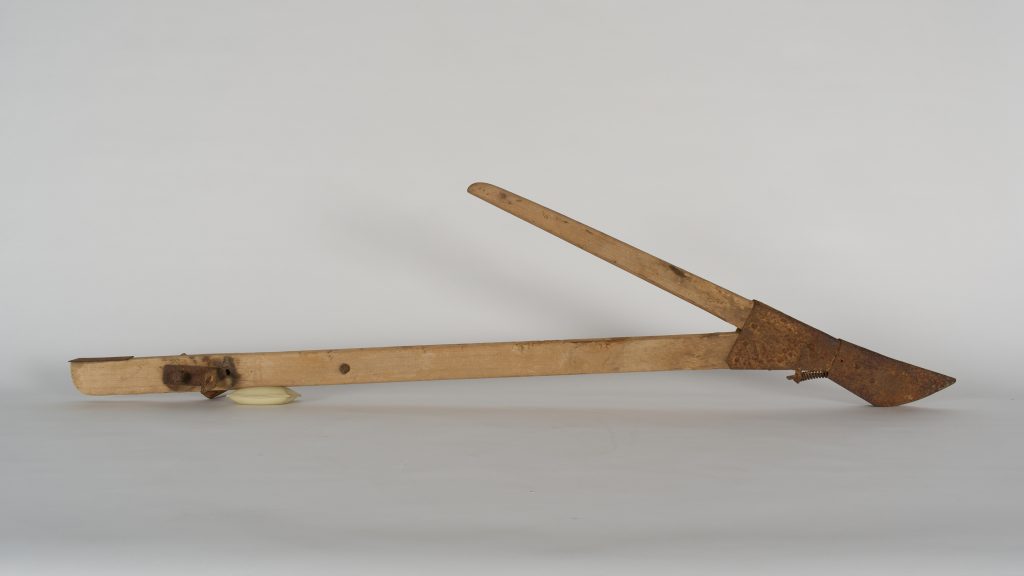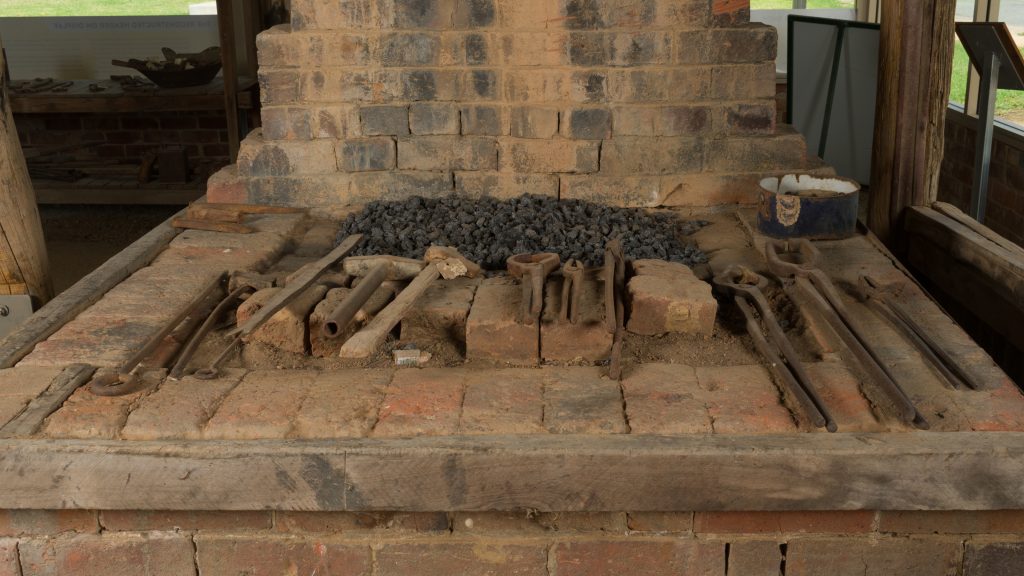
Two parts reliant on each other, the forge and bellows were the fire-breathing heart of Headlie Taylor’s (1883-1957) blacksmith workshop. To heat metal to the point it became malleable enough to shape, Taylor would have heated this forge to temperatures greater than 1100°C with the help of the bellows. With each pump of the bellows, […]
Read More…
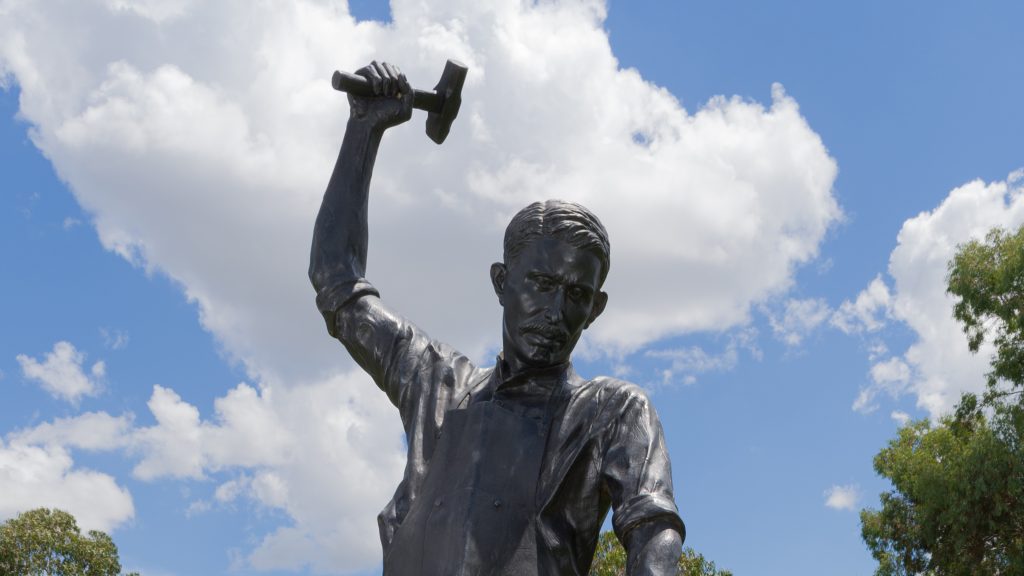
Hammer held aloft, the man prepares to bear down on the hot metal. He strikes it until it forms the shape of a cog which fits like a puzzle piece into his new invention. Over thirteen months, Melbourne sculptor Paul Smits skilfully captured this moment in this bronze sculpture for the Headlie Taylor Header Museum, […]
Read More…
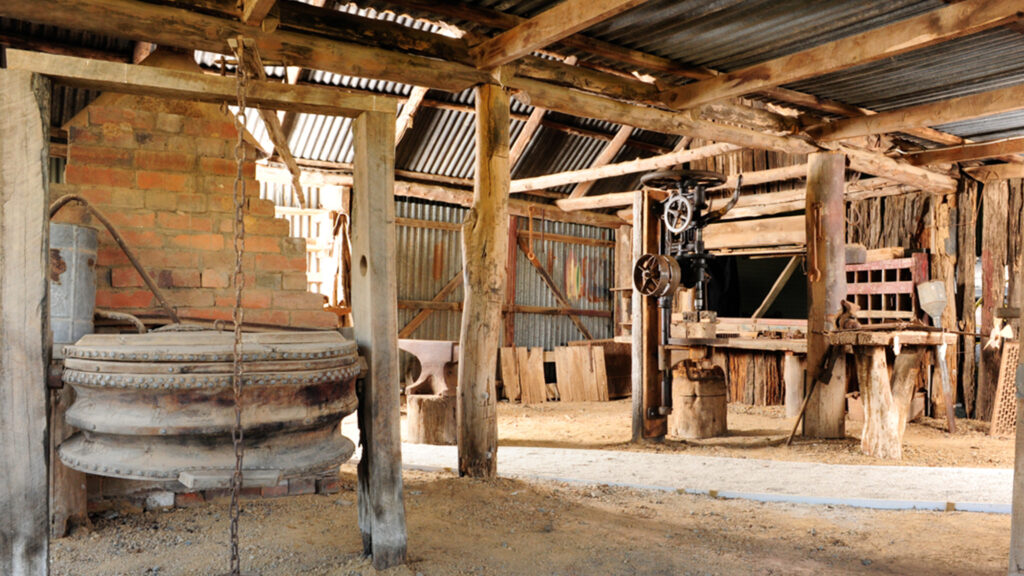
Those familiar with Headlie Taylor (1883-1957) might feel inspired upon entering his humble blacksmith workshop. The building was originally constructed by his parents as part of their family farm, ‘Emerald Hill’ near Henty in southern NSW, in 1880. Emblematic of farm buildings of the time, the functional shed had an earth floor while the pole […]
Read More…
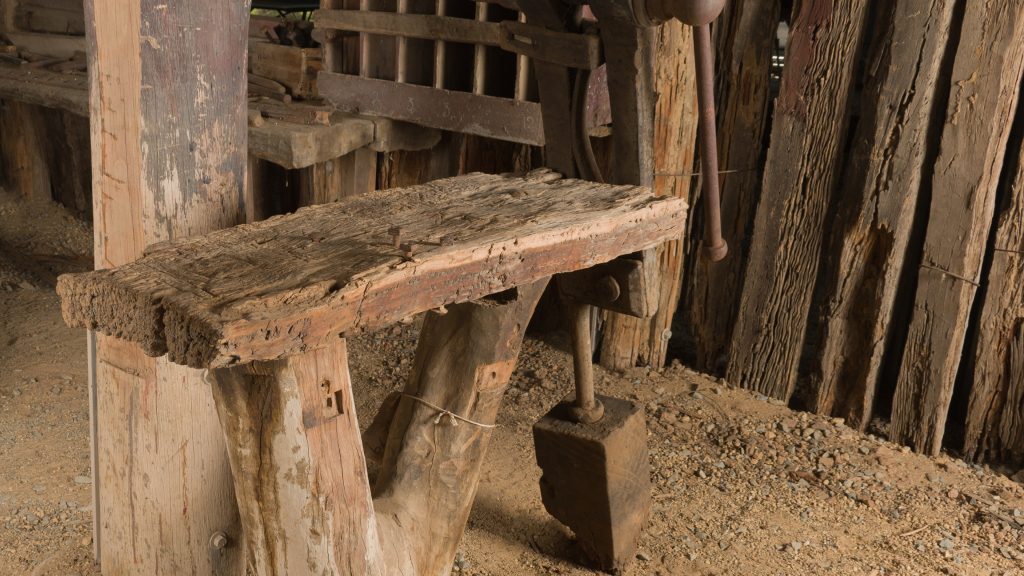
In 1911, Headlie Taylor (1883-1957) was ready to build the machine of his dreams. Having taught himself the skills to make his famous Header Harvester, Taylor co-opted the family blacksmith shop to begin his work. This shed had been built by his father in the 1880s, about the time the family purchased their property near […]
Read More…
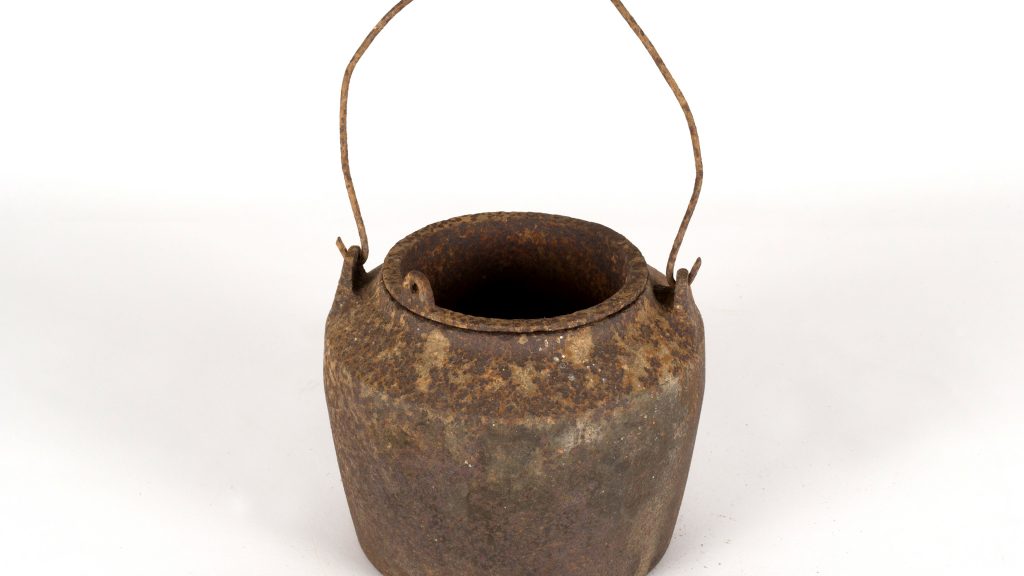
Before 1920 and the invention of synthetics, glues were either animal, vegetable or mineral. These natural glues were used for centuries, but animal glues were used to bond wood and were very strong and water-resistant. Aboriginal peoples from throughout NSW used animal glues for tool making, and European settlers brought with them their own glue […]
Read More…
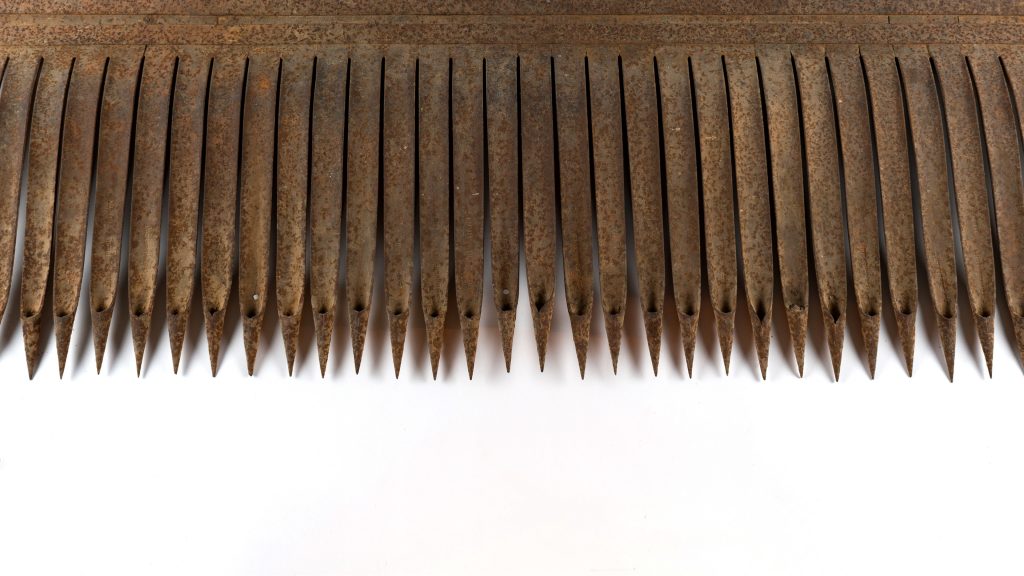
Inspiration comes from many places. Sometimes an object’s story is much bigger than simply what it is or did. Hinting at what inspired Headlie Taylor’s (1883-1957) innovative agricultural inventions, this comb also reveals the story of the dynamic Henty community the designer was a part of. This comb is known as a short comb, most […]
Read More…
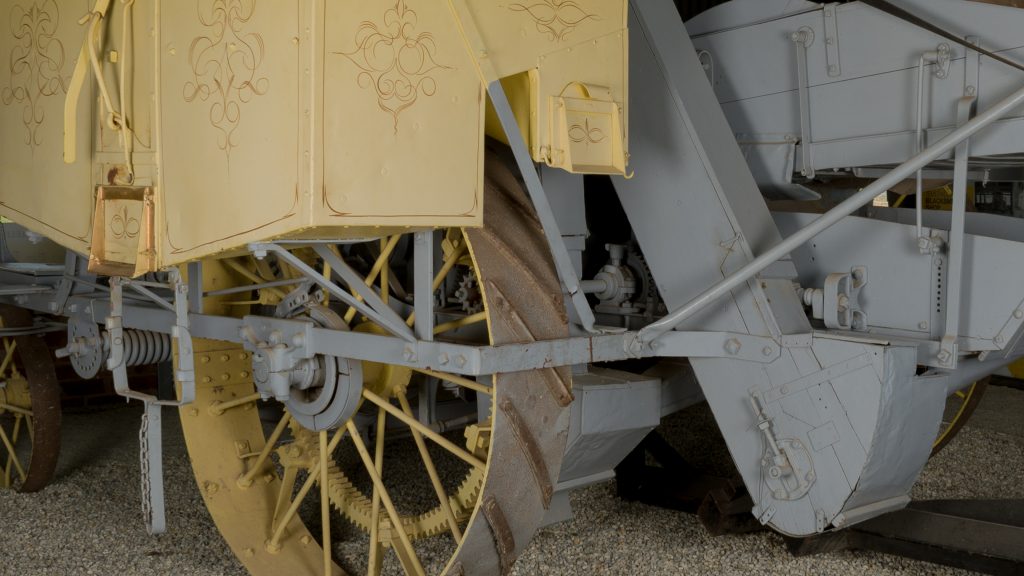
Headlie Taylor (1883-1957) was a great designer and innovator who, by 1915, had created the machine of his dreams. He just needed a manufacturer and finance to fully realise his ambitions. In January 1916, Australia’s biggest agricultural industrialist Hugh Victor McKay couldn’t make Headlie’s initial demonstration on the Taylor farm, so a follow up visit […]
Read More…
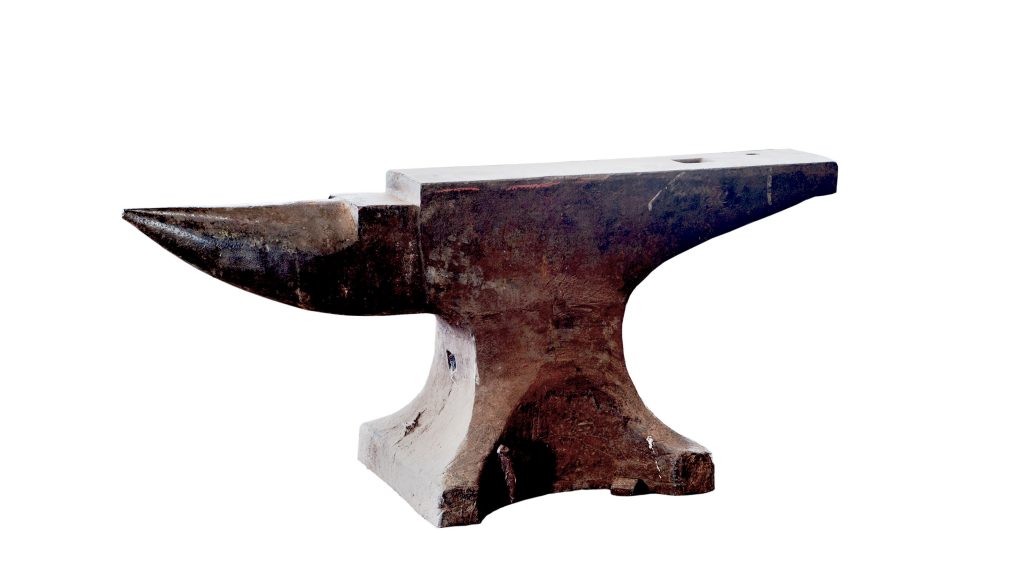
Along with the forge, the anvil was the most important tool in the blacksmith’s kit. Using the anvil, hot metal was ‘worked’. It was repeatedly hammered and shaped around its angled and conical edges. Imagine the loud clanging blow of a hammer forming the metal, while the whoosh of bellows pumped air into the forge […]
Read More…






